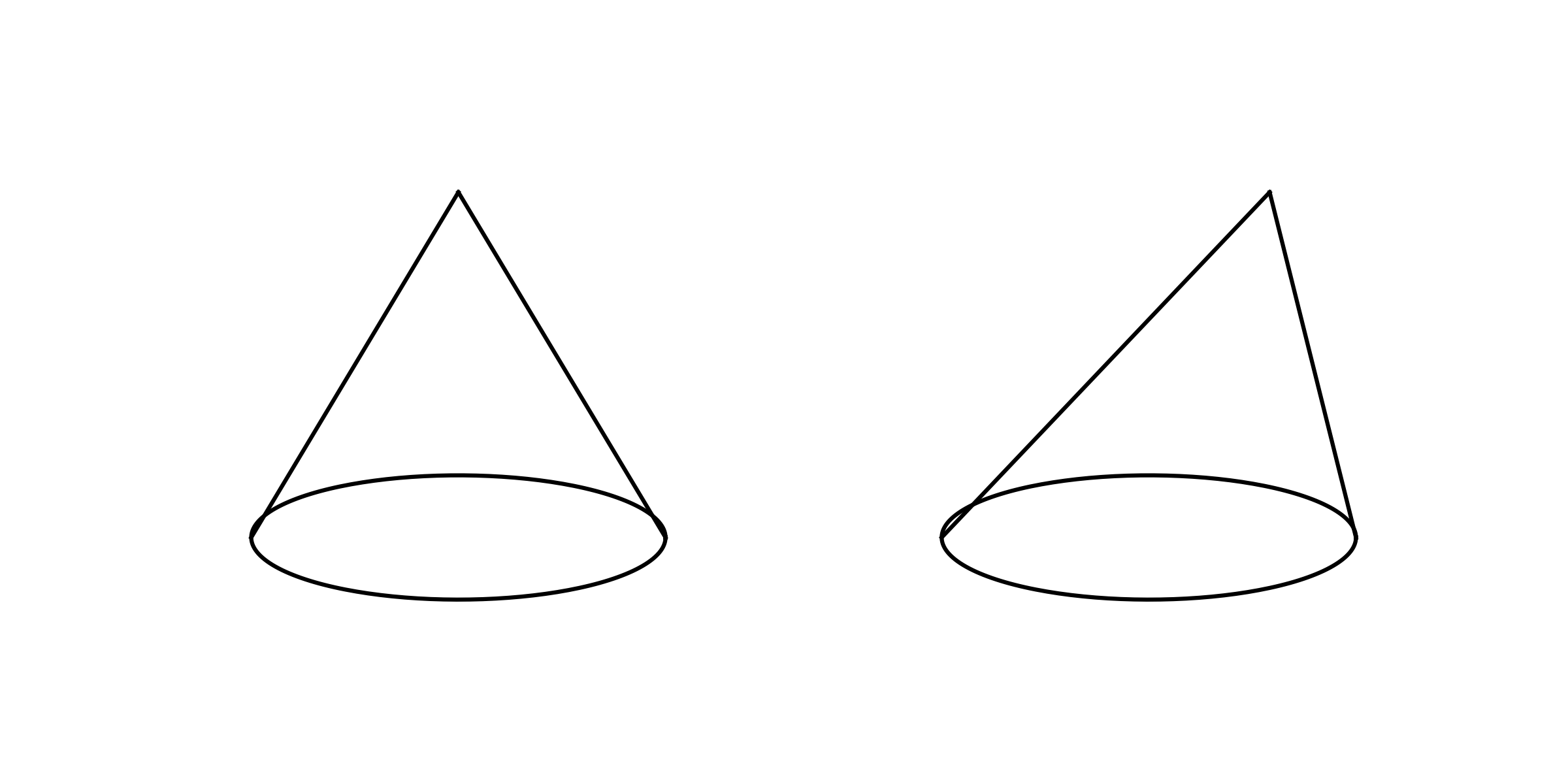Cones and pyramids
Cones and pyramids are three-dimensional figures that have in common that they gather all the sides in a single apex. This apex lies above the base, which can have different shapes.
In a cone, the base is a circle, while in a pyramid it is a polygon, for example a triangle or a square. Regardless of the type of base, all the side faces extend from the base to the apex.
Cones and pyramids can be right or oblique.
In the right figures, the apex lies vertically above the center of the base. In the oblique figures, the apex is shifted so that the figure leans. Although the shape is different, the volume is calculated in the same way from the base area and the vertical height.

A right and an oblique cone
The volume of both cones and pyramids can be described with the same general formula. First, the area of the base is found and multiplied by the height, after which the result is divided by three.
Truncated cones and pyramids (frustums) arise when the figure is cut with a plane parallel to the base. In this way, the apex is removed, but the figure retains its characteristic shape.
Cones and pyramids are often found in architecture, engineering and nature, because their pointed shape is stable and can distribute weight effectively. Examples are stacked pyramids, cone-shaped tents and mountain peaks.